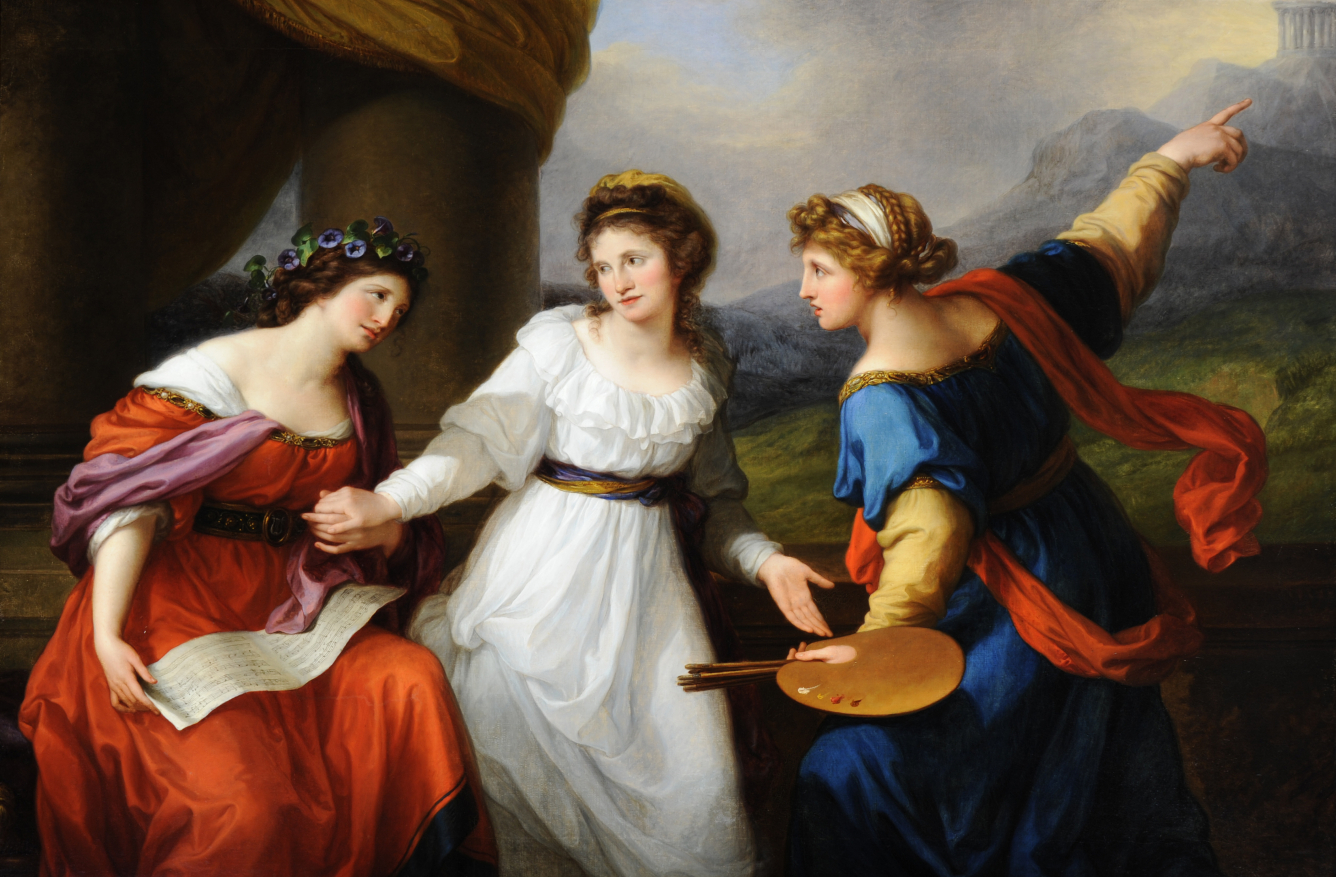Depictions of Life in the Classical Era
The Classical Period (est. 1750-1820), followed the Baroque Era. It began with the development of the Rococo art style which could be viewed as the opposite of the Baroque style. Rococo art tends to be very light, playful, and very pastel in it's use of color. At first, Rococo was coveted by the aristocracy class of the French. However, history began moving somewhat quickly around this time causing Rococo art to fall out of fashion relatively quickly. There was a change in attitude and revolutions were beginning, which created a shift in styles with people preferring depictions of history and heroism. Thus, the Neoclassical style was born.
Due to the number of scientific discoveries and the revolutions that were occurring, I believe there was a morality shift as people's values began to change. This can be seen as the events depicted in art change from what is painted in Rococo to what is painted in Neoclassical. With a few exceptions of course.

The Love Letter (1750, France) by Francois Boucher, shows two young shepherdesses ignoring their responsibilities to send off a love letter via pigeon. The almost dreamy brushstrokes and use of light colors make this an obvious piece of Rococo art. There are no harsh lines and though the contrasts are likely inspired by Baroque, they are not extreme making the imagery feel happy and playful.
Both The Meeting and The Love Letter share the same style (Fragonard had worked in Boucher's studio) but they also share similar imagery. Boucher portrayed being a shepherdess as a carefree life and Fragonard portrays two aristocratic lovers sneaking to spend more time together as if nothing else in the world is more important. These both depict a rather unrealistic look at what life was. They seem to offer a sort of escape into this dreamworld of art. I like to compare these paintings with novels like Bridgerton or Jane Austen's Emma in today's world. Obvious unrealistic romanticism of times past.
The Neoclassical style is usually known to reflect acts of heroism which became favorable as there was a rise in the merchant class and a negative image of the aristocratic society. The attitudes of what people liked to view began to change. Heroism and moments in history began being commissioned and the style was shifting to portray more realistic times of life.

Self-Portrait of the Artist Hesitating Between the Arts of Music and Painting (1794, Rome) by Angelica Kauffman shows a shift in art depictions that is not related to history or revolutions but simply nonfiction. Kauffman was not only talented in the arts of painting but also very good at singing opera. At a young age she had to choose which of the arts she wanted to pursue and chose to continue painting. The artist chooses to follow the art of painting but looks somberly behind at the art of music. While this isn't a snapshot of history, it is a representation of a real-life event. People began to prefer these depictions of real-life events over the fantasy portrayed in Rococo style.
The art style feels very similar to Rococo with it's use of light colors and less intense contrast. There are no harsh lines and the brushstrokes feel soft. However, the story being told varies greatly from the examples of Rococo I presented earlier. There's a sense of urgency and intensity that most Rococo style portraits don't possess.
I enjoy both Rococo and Neoclassical works but I prefer the imagery of Rococo. While it's clear and important that art reflects what is important and coveted at the time, I enjoy being able to escape into a dreamworld. I would also much prefer the soft, dreamy landscapes over sovereign reality displayed in my home.
Images -
Fragonard https://www.artsy.net/article/artsy-editorial-10-artworks-defined-rococo-s
Kauffman https://www.nationaltrustcollections.org.uk/article/paintings-guide
Citations:
Lebowitz, Rachel. “10 Artworks That Defined the Rococo Style” Artsy, 29 May 2018, www.artsy.net/article/artsy-editorial-10-artworks-defined-rococo-style
Trust, National. “Paintings Guide” Nationaltrustcollections.org.uk, 2016, www.nationaltrustcollections.org.uk/article/paintings-guide
Rand, Richard. “The Love Letter” Www.nga.gov, 1 Jan. 2009, www.nga.gov/collection/art-object-page.46027.html
Meyer, Isabella. “18th Century Art - the Era of Rococo and Neoclassicism” Art in Context, 6 Mar. 2024, artincontext.org/18th-century-art/


I always found the Rococo style very cute and appealing, I think what makes these types of paintings more interesting is the whimsical depiction of heroic or controversial stories portrayed in the pieces. I find Angelica Kauffman's painting the most interesting, I like how the characters portray her different passions. You can tell how much she loved both hobbies and continues to subtly reference them in her other works like her self-portrait. I also enjoy how her painting doesn't depict women in glamorous ball gowns as you would in French Rococo paintings, you can truly see how the shift in attitudes differed compared to earlier depictions. The political shift is also clear to see when you look at the portrayal of the women in each of the three paintings, it's truly interesting how much art reflects the history and the people behind the artwork.
ReplyDeleteThe change from Rococo to Neoclassical is fascinating since the paintings you chose have those light colors and cheerful aspects. In my opinion, the beautiful aspects of the Rococo style are more eye-catching, making them more iconic and unique than the classical era paintings. There is something attractive about those landscapes. I suppose I would like to have that type of landscape in my bedroom. Personally, I am attracted to those pastel tones. I really liked your blog; you really chose some incredible paintings.
ReplyDelete